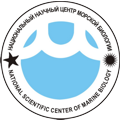 |
Laboratory of Ichthyology
Scientific Head: Andrei Anatolyevich Balanov, a leading researcher, Cand. Sci. Biol., has managed the Laboratory since 2006.
Main fields of research
Study of the taxonomy, systematic, and origin of fish in the northern Pacific Ocean; assessment of the structure, dynamics, and productivity of coastal, pelagic, and deep-sea ichthyocenes of the Far Eastern seas of Russia; study of the biology (age, maturation, breeding, embryonic, and larval development) of fish in the Far Eastern seas. Determination of the population structure of fish and other marine organisms in the Far Eastern seas of Russia.
Approaches and methods used
To achieve the objectives set out, both traditional and new to ichthyology methods of data collection and processing are used. The study of species based on methods with the wide use of osteological and external traits, both developed by laboratory researchers and well-known from the literature, is fundamentally new to the fish research in the Far Eastern seas. A serious breakthrough in this field took place after the National Scientific Center of Marine Biology (NSCMB), FEB RAS, acquired the latest digital Softex X-ray unit which allows rapid examination of a large set of traits and better description of species. To study the population structure of fish, both morphological (fluctuating asymmetry) and molecular/genetic methods are used (extraction of genomic DNA, development of primers and PCR amplification; gene sequencing; mathematical analysis of polymorphism, divergence, recombination, etc.).
The studies on the structure of fish otoliths, determination of daily micro-increments, and high-resolution photography are carried out using the equipment available at the Center for Collective Use, NSCMB FEB RAS (microscopes Zeiss Axio Imager Z2, Zeiss Discovery V12, and Zeiss EVO 40 equipped with EDS).
Karyological analysis is used to resolve systematic and taxonomic issues when studying karyotypically or morphologically similar fish species and forms, but can also be applied as additional karyotype markers suitable for solving phylogenetic problems.
The researchers of the Laboratory also investigate and describe the ultrastructure of spermatogenesis, the development of oocytes during early and late vitelogenesis, the structure of mature egg membrane, as well as the structure of auxiliary cells in fish. Research is based on electron microscopy methods, and results are processed using modern statistical software.
The basic material for research is the collections made by coastal expeditions of the Laboratory of Ichthyology, IMB FEB RAS, and by complex TINRO expeditions to the Far Eastern seas and adjacent waters of the Pacific Ocean in 1995–2019. Investigations into morphology, taxonomy, and distribution of fish, in addition to our own unique data stored at the Laboratory of Ichthyology and the Museum of NSCMB FEB RAS (MIMB, Vladivostok), are also based on detailed study of well-known literature and rich collections of the Zoological Institute RAS (St. Petersburg).
Range of organisms and objects under study; geography of research
The researchers of the Laboratory study cartilaginous (Chondrichthyes) and bony (Actinopterygii) fishes from the Far Eastern seas of Russia and adjacent waters.
Laboratory instrument base:
- Faxitron MX-20 Cabinet X-ray System;
- Microscopes: Olympus, MSP-2, and MBS-10;
- Hand-held profiler to measure water temperature and salinity in coastal waters (up to 100 m deep);
- JUNIOR air compressor;
- Zero immersion suits.
Information provided by the junior researcher A.Yu. Kravchenko.
| Contacts: |
|
Palchevskogo str. 17 |
|
Vladivostok, Russia, 690041 |
|
Phone: +7 (423) 2310905 |
|
Fax: +7 (423) 2310900 |

